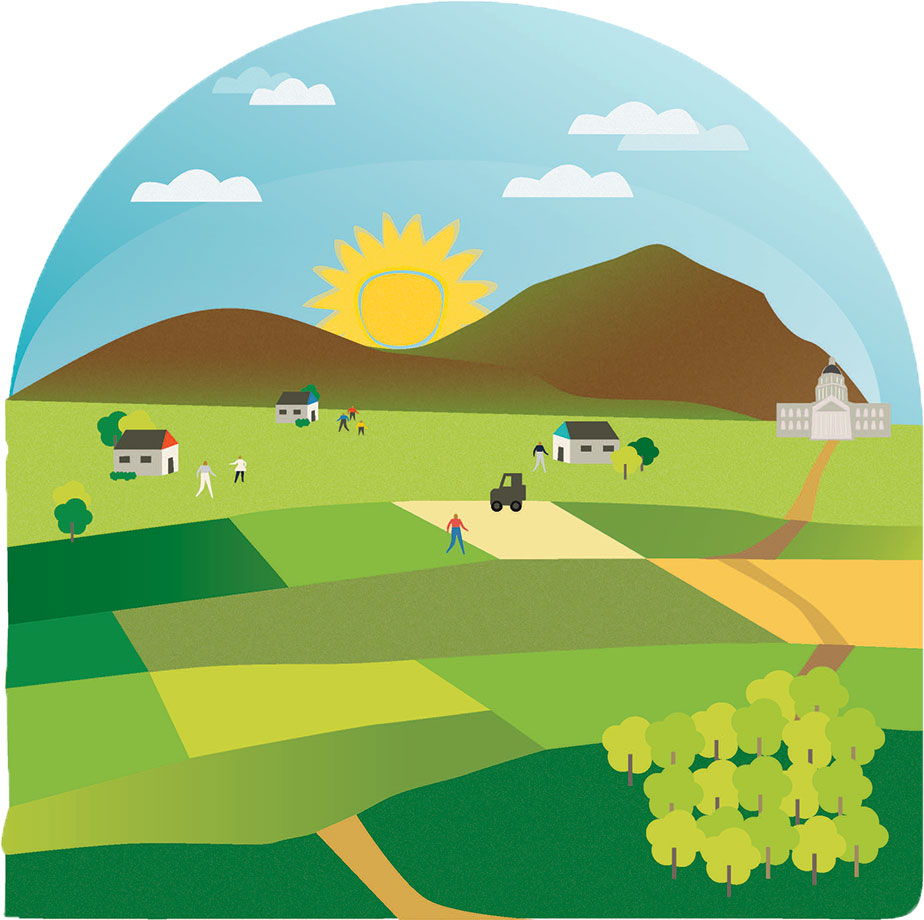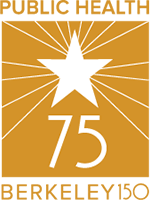
For nearly two decades, researchers toiling in a small brown building in Salinas have been probing the effects of pesticides on the health of some of the most vulnerable members of society: kids who live, play, and attend school near agricultural fields. Salinas, about 100 miles south of the Bay Area, lies at the heart of America’s “Salad Bowl”—a long, narrow valley near the coast, nestled between two rows of mountains. Most of the lettuce consumed in the United States grows in its agriculturally prolific fields.
But the chemicals sprayed on those fields can take a toll, particularly on children. The study based in the little brown building has made this case time and again. Children exposed to sulfur, for example, are more likely to have asthma and other breathing problems. More than 150 peer-reviewed publications have emerged from this Center for Environmental Research and Children’s Health (CERCH) project called CHAMACOS.
Other studies connect a mother’s exposure to organophosphates—common insecticides used in homes and fields—with developmental disorders and hyperactivity in children. One investigation found that at seven years old, children born to mothers who live within a kilometer of fields treated with organophosphate pesticides have lower-than-expected IQs, a two IQ-point loss for every 522 pounds of applied pesticides.
The researchers share their findings and information with people who can improve public health and effect change. Those stakeholders include the farmworker families in the Salinas areas, as well as lawmakers and policymakers at the local, state, and national levels. Turning research into action is the ultimate goal of CERCH, housed at the School and the academic home of CHAMACOS and other studies.
It’s a goal shared by other University of California initiatives at Berkeley, including the California Program on Access to Care, or CPAC. Established more than 20 years ago and administered by UC Berkeley since 2008, CPAC connects University of California researchers with lawmakers in Sacramento in order to help the state develop evidence-based policy.
These centers first understand and then address the major public health problems facing some of the state’s most vulnerable, and often hidden, communities—the working poor, immigrants, and farm workers and their families.
The Valley and Beyond
In Mexican Spanish, chamacos is an endearing term for children. The Center for the Health Assessment of Mothers and Children of Salinas, or CHAMACOS study is the brainchild of Professor Brenda Eskenazi, who divides her time between the Bay Area and the Salad Bowl. “I don’t know what ever got me to think I could do a study like this,” she says.
By the late 1990s, she’d spent decades studying reproductive epidemiology and the effects of chemicals on children’s health. At some point she recognized that, given her location in California, she was surrounded by a vital but overlooked source of exposure—the effects of which hadn’t been analyzed.

Brenda Eskenazi as an assistant professor
“I knew it had to be about agriculture,” says Eskenazi, who also directs CERCH. “We’re the agriculture state. At the time, there wasn’t much research being done.”
The longitudinal CHAMACOS study focuses on the effects of pesticides and other environmental exposures during pregnancy and early childhood, and the study’s young participants—most of whom enrolled before they were born—are now on the cusp of adulthood.
From the beginning, Eskenazi knew she had to involve the families she wanted to study, not only as participants but as partners. Over the years, she and her collaborators have built meaningful and productive relationships with the farmworker families.
“It’s important to us to know what the community concerns are, so they can help us with what direction we should be going in our research,” says Kim Harley, associate professor of Maternal and Child Health and associate director of CERCH. Those connections make it possible to connect exposures to health risks, and to communicate those findings to the at-risk population.
Community members work with CERCH researchers and are trained to collect data and biological samples. It’s an example of community-based participatory research, which means scientists and subjects work as equal partners.
“We really have been able to build a connection with the farmworker community and with the community in general,” says Harley. “What we’re learning about early life environmental exposures has applications to all of us.”
Giving back to the community is an important part of CHAMACOS. The program has educated more than 50,000 people in the community about pesticides and how to protect themselves against unnecessary exposure—even through small changes. “We learned in the study that if people keep their shoes outside and wipe their feet before they enter, there are lower levels of pesticide inside,” says Eskenazi.

Agricultural fields and farmworkers in the Salinas Valley
Giving back also includes contributing to the education of the children themselves. More than 500 have participated in the study since birth, and an additional 300 have been enrolled since they were nine years old. Now, those children are on the cusp of adulthood. Some have children of their own; others are writing college essays. Some have even become co-researchers.
“We work with them to develop neat research studies that they design and do the data collection for,” says Harley. In a study called HERMOSA, for example, teenage researchers analyzed the effects of exposure to endocrine disruptors often used in cosmetics and designed interventions to reduce exposure. (Hermosa means beautiful in Spanish.) In another offshoot study, teenage researchers have been studying pesticide exposure among their peers in the community not currently enrolled
in CHAMACOS.
The study’s leaders also want to affect change in policy and put safeguards in place to protect the people of Salinas. In March 2017, for example, Berkeley environmental health scientist Asa Bradman presented findings from a CHAMACOS paper to the California State Senate. In January 2018, the state implemented regulations requiring schools near fields be notified in advance of the application of pesticides, and prohibiting the use of some pesticides near schools at certain times.
Harley and other CERCH researchers have also studied exposures to chemicals like Bisphenol-A (BPA) and those found in flame retardants. “Our flame retardants research played a role in changing the flammability standards of the state of California with respect to the chemicals in foam,” she says. The hundreds of papers and additional studies using CHAMACOS data show its potential to help inform research in a variety of areas, including air pollution exposure, genetics, and even dentistry.
“If I have to credit myself with anything, it’s that I love the interdisciplinary nature of this thing,” says Eskenazi, who originally trained as a neuropsychologist. “The study is very transdisciplinary.”
The success of the CERCH has caught the attention of epidemiologists and other researchers worldwide. “We have shared our study protocols widely with people across the world,” says Eskenazi. On one day, for example, she hosted collaborators from Chile, Brazil, and France. She also advises on birth cohort studies that look at environmental exposures around the world. “I think we’ve helped move the field forward,” she says. “We have a model of what can be done.”
The end, she says, is not in sight. Eskenazi has put practices in place so that CHAMACOS can continue its usefulness long into the future. For example: the study has produced a biorepository of about 350,000 samples, she says. “People can use these data and biological samples for years to come.”
She’s also thinking about future study populations. “I feel like in some ways that I have 600 children,” Eskenazi says. “I would love if we could follow-up on the children’s children, the study’s grandchildren.”
Spreading the Word
Peer-reviewed publications are often seen as a benchmark of academic success, but making research useful means making it available it beyond the boundaries of academia. That can be a high hurdle, as researches have incentives to publish but not to share, says Professor Will Dow, a health economist and interim dean of the School of Public Health.
“We need to provide them with extra resources in order to be able to disseminate, because that’s a substantial extra step beyond writing journal articles,” he says. “Encouragement sometimes means paying for more of their own time to engage with legislative stakeholders.”
In 2006, when health reform was a pressing topic in the Schwarzenegger administration, Dow had been conducting research on risk adjustment that could help bring perspective to the conversation. He applied for assistance from the California Program on Access to Care, which provided him with a grant that funded his travel and time to join the statewide conversation by briefing lawmakers on his research. In 2009, he received another CPAC grant to fund dissertation research by graduate student Carrie Colla, who was looking at the effects on employers of mandated health benefits in San Francisco. That project resulted in multiple publications, and Dow and Colla, now an associate professor at Dartmouth College, shared their results with policymakers in San Francisco, Sacramento, and Washington D.C.
Dow says that the CPAC grant was critical to helping Colla complete her research. “While funding is available for many types of healthcare research,” says Dow, “it is not readily available for this type of timely, policy-relevant research.”

CPAC founder Gilbert Ojeda
CPAC was established with projects like Dow’s in mind; its goal was to “bring academic expertise to bear on helping the state develop evidence-based policy,” says Gilbert Ojeda, the founding director of CPAC.
The center began in 1997, when the California legislature reached out to the University of California system to pilot a program to bring faculty expertise to state legislators, with the goal of using evidence to shape around issues related to the working poor, immigrants, and farmworkers. “It followed the logic that state colleges and universities ought to give a direct value to the decisions that the state makes,” says Ojeda.
The program had three primary components, according to Ojeda. First, it funded original research in relevant areas. Second, it offered technical assistance for researchers to connect with policymakers, such as presenting evidence to a relevant government committee. Third, it helped develop new initiatives to reach vulnerable populations.
For example, Ojeda says, the CPAC served as a sort of incubator for the Health Initiative of the Americas, an international program established at the School of Public Health in 2001 to reduce health disparities in California’s Latino population, and the California Medicaid Research Institute, which united experts throughout the University of California system to work on the largest Medicaid program in the country.
The CPAC has awarded more than 150 grants to state university researchers. Hector Rodriguez, professor of Health Policy and Management, is now the faculty director of the center. Under his guidance, the center is emphasizing moving UC investigator generate evidence into policy changes aimed at improving health equity.
“Faculty are often incentivized to produce knowledge, but not to use evidence to help the legislature,” he says. “There is a market failure in our system.” That’s where CPAC comes in. “We try to remedy that failure by funding and providing technical assistance to faculty who have evidence to share with the legislative stakeholders who can use that evidence to develop and implement public policy.”

ALEIN HARO AND ANDREA JIMENEZ, CPAC FELLOWS, WITH SEN. KEVIN DE LEON DURING A SENATE HEARING
Last year, Rodriguez says, the center its core funding from the state after 20 years, due to a redirection of funds. To have a more focused impact on policy and community change, CPAC is now focused exclusively on disseminate existing evidence—rather than funding original research—to decision-makers who need to see it. For example, CPAC has funded six projects to develop tools like videos, briefs, roundtables, or curricula that will help disseminate evidence to key audiences. These are aimed at influencing policy in areas including helping undocumented Californians, attending to the needs of older adults in the inland empire, and making it illegal for ICE to deport patients from hospitals.
Rodriguez hopes these funding opportunities will provide incentives to academics to share their work in order to improve health equity. “Focusing on end users will change the way we do research over time,” he says, “and encourage funders of research to see the value in supporting the dissemination and use of evidence.”
CPAC also offers small grants to faculty members so they can respond to requests from legislative committees, caucuses, and offices. “CPAC’s best asset to the legislature is our faculty and researchers,” Rodriguez says, “We bring expertise rom across the UC system.”
By connecting researchers with policymakers, CPAC helps shape the conversation and prioritization of health policy issues at many levels. CPAC’s legacy is secure, even if its financial future is less certain.
As the center works to raise the influence of research in and around state issues, both Ojeda and Rodriguez see a major opportunity on the horizon. California’s leaders will continue to wrestle with the questions surrounding universal coverage and lowering the cost of care, and they’ll continue benefit from the input of experts at Berkeley and beyond who have studied health markets here and around the world. As will all Californians.














